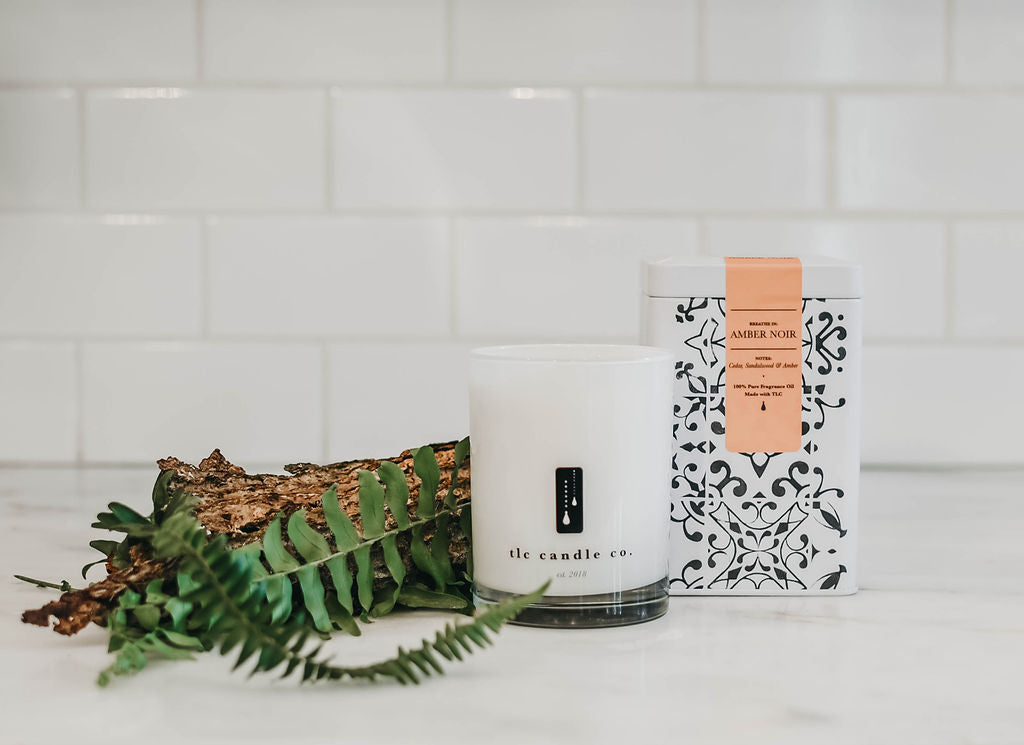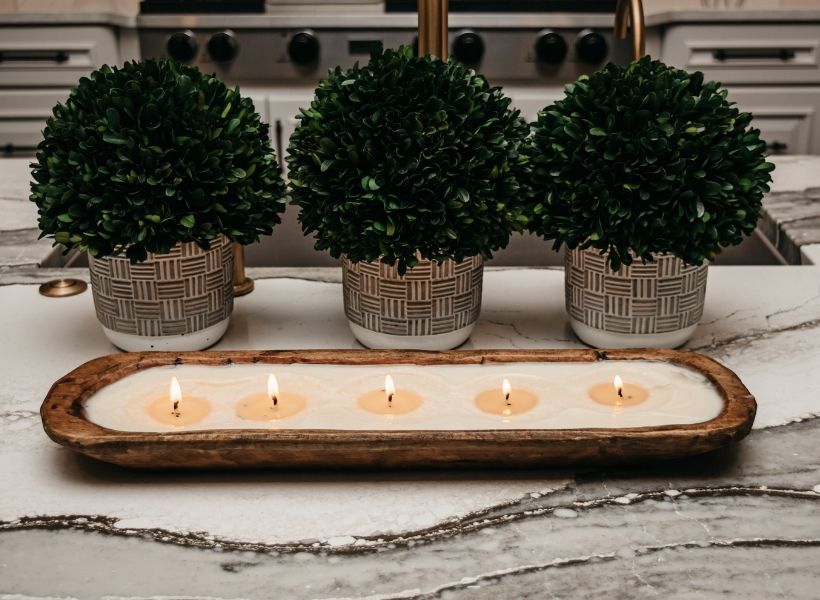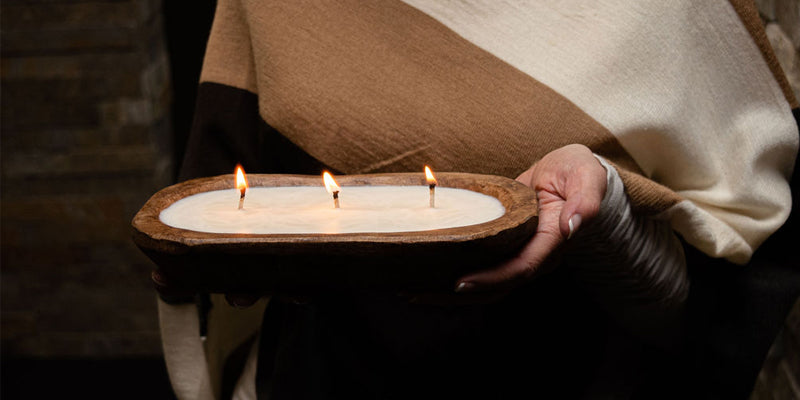What Is Candle Tunneling and How Do You Prevent It?
September 29, 2022

Candles add so much beauty and ambiance to our homes, but unfortunately, they’re not problem-free. A common problem that many candle owners see happen with their candles is tunnelling. If you’ve noticed your candles aren’t burning evenly, they may have a problem with candle tunneling. Keep reading to learn what candle tunneling is and how to prevent it.
Candle Tunneling Definition
Candle tunneling is more than uneven burning. Candle tunneling is a specific problem that occurs when you don’t burn the candle completely to the edge of the container on your first burn. This creates a waxy edge around your wick so that every time you burn it in the future, the wax burns down instead of across. Eventually, this forms a wax tunnel with your wick at the center. You’ll find that it’s harder to burn your candles if a tunnel forms, and you may have to stop burning them altogether or risk wax dripping directly onto the wick from the top of the tunnel. This is a waste of a perfectly good candle, and many people are disappointed when it happens. Luckily, there are ways to prevent candle tunneling.
Candle Tunneling Prevention
To prevent candle tunneling, you have to provide the candle with a good memory. The wax will remember the pattern of its first burn as you continue to use it, so you have to make sure that you burn it properly the first time to set the wax up for future success.
Start by choosing a flat, even surface away from air drafts to place your candle. You should choose an area that’s out of the reach of children and pets so you don’t have to worry about them disturbing the candle while it goes through its first burn. This is an important safety precaution to take every time you burn a candle, whether it’s the first time or the tenth.
Once you have your candle in a safe place, you should trim the wick. Wicks should be around 1/8th of an inch long so that they can burn properly without emitting too much smoke. Some companies ship candles with wicks that are already this length, but some don’t. Measure your wick and trim it to the appropriate length before lighting it. This will make sure the flame is the right size to burn properly and prevent candle tunneling. You can use scissors, nail clippers, or a wick trimmer to make the appropriate cut, and you’ll need to remember to continue to trim the wick as you burn through the candle to help make sure the good burn pattern stays intact.
You can light your trimmed wick with any lighting device, although many people prefer long-stemmed lighters as they help keep your hands safe. Touch the lit device to the top half of the trimmed wick, making sure that it catches fire before removing it. You don’t want to singe the wick and then have to try again, as this can cause lighting problems. If your candle has more than one wick, you should light all of them so that the first burn is consistent. In the future, you can choose to only light one or two of your wicks at a time, but as we mentioned above, the first burn is very important, and you want the wax to burn to the same level, so light them all the first time.
Once you’ve lit your candle, you need to let it burn until the entire top layer of wax is melted. The time it takes to make this burn can vary depending on the size of your candle, but the average burn time is three hours. Smaller candles may only need to burn for one hour, and larger candles can burn for up to four hours. If you have a large candle with more than three wicks, it will probably take more than four hours to melt the top layer of wax, but you still shouldn’t burn it for more than four hours. Burning a candle for more than four hours can cause carbon to collect on the top of the wick, making the wick unstable and creating excessive smoke. In these cases, you should burn the candle in several parts, either halves or thirds, until the wax in each section melts to the same point. This will allow you to prevent tunneling without damaging your wick.
After your first burn, you can put your candle out. The best method for putting out a candle is suffocation, and you can do that in several ways. Many people use candle snuffers, especially for candles that don’t have lids. However, if your candle has a lid, you can use that to suffocate the flame. Allow the candle to cool completely before trying to move it as the recently melted wax could splash over the side of the container and hurt you or damage your surface.
Candle Maintenance
Now that you’ve successfully completed the candle’s first burn, you shouldn’t have any problems with candle tunneling. However, if you fail to maintain a good wax memory, then you could risk tunneling in the future. You can prevent this by always burning your candle until the top layer of wax melts. If you’re burning a candle with multiple wicks and only want to use one wick at a time, then just make sure that you burn each wick consistently and that the wax melts to the same level. Remember to trim each wick to the 1/8th inch mark before each burn as well, and never burn a candle for more than four hours to maintain wick integrity and safety.
Now that you know what candle tunneling is and how to prevent it, you can confidently purchase and burn your next candle, no matter its size. If you’re looking for luxury hand-poured candles in various sizes that will fill your home with the perfect ambiance, TLC Candle Co. has exactly what you’re looking for. We offer small one-wick candles, large dough bowl candles with multiple wicks, and scent options that don’t require burning, like reed diffusers. The choice is yours.

Also in TLC Talks

Everything You Need To Know About Sandalwood Scents
October 17, 2022

5 Benefits of Burning Scented Soy Candles in Your Home
October 17, 2022

6 Different Types of Candle Waxes and Choosing the Right One
October 07, 2022
Find Your TLC
"Sourced with tender, love, and care to nourish your soul and inspire your senses. To live life is to experience emotion...Enjoy, you are worth it!"
- Tami L Crawford
Quick Links
News & Updates
New Products + Promotions + Special Events
Subscribe today and you’ll be the first to know! (Sign up, it’s pretty amazing.)
© 2025 TLC Candle Co.. Powered by Shopify



